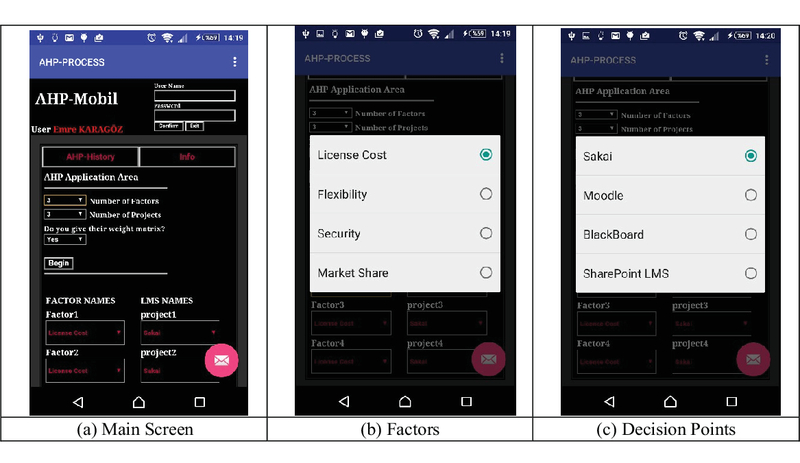Lms Selection Process For Effective Distance Education System In Organizations
DOI:
https://doi.org/10.18502/kss.v1i2.668Abstract
Towards the end of the 20th century, especially development of science and technology brought some innovation to some conceptual area such as education. In society, to build a quality and civilized life, education emerges as a one of the most important actors. Unfortunately, the rights in education of the every person in society may be delayed due to financial problems, physical disabilities, time pressure, geographical distances or any other reasons. Distance learning is a one of the method that provides education for people by eliminating these disadvantages. Since end of the 19th century, distance education has been provided with some methods such as TV, radio, mail and etc. Especially, in the beginning of 21th century; internet is widely used by everybody. New technological environment has brought a new opportunity for distance education.
Learning Management System (LMS) is the most important actor of the internet based distance learning that brings together educators and students for training. LMS allows to deliver materials, having assignment and quizzes and other educational activities. Whether educational institutions or organizations that are emphasis on the training of employees can use LMS platform. Every organization has to decide which LMS is suitable for them. Decision makers face to solve this kind of problems because every LMS has different characteristics and different learning process.
This study is focused on choosing suitable LMS for organizations by using AHP methods. Two groups of LMS, open source software’s (Moodle and Sakai) and commercial software’s (BlackBoard and Sharepoint LMS), are compared by using selecting criteria’s. These criteria’s are license costs, flexibility, security, user interface and prevalence of use. In the decision process, different weight ratios are used depending on their priority. The findings of this AHP Process are discussed.
Keywords: Distance Learning, LMS, AHP, Decision Making Process
References
M. Alexander, Decision Making Using the Analytic Hierarchy Process (AHP) and SAS/IML, (2012).
K. Aoki, Generations of Distance Education: Technologies, Pedagogies, and Organizations, 1183–1187, (2012).
N. Cavus, Distance Learning and Learning Management Systems. Procedia - Social and Behavioral Sciences, No. 191, 872–877, (2015).
N. Cavus and T. Zabadi, A Comparison of Open Source Learning Management Systems , Procedia - Social and Behavioral Sciences, A Comparison of Open Source Learning Management Systems , Procedia - Social and Behavioral Sciences, No. 143, 521–526, (2014).
R.-J. Chao and Y.-H. Chen, Evaluation of the criteria and effectiveness of distance elearning with consistent fuzzy preference relations, Expert Systems with Applications, 36, no. 7, 10657–10662, (2009).
M. D. Dzandu and Y. Tang, Beneath a learning management system - Understanding the human information interaction in information systems, No: 3, 1946–1952, (2015).
M. El-Mekawy, L. Rusu, and E. Perjons, An evaluation framework for comparing business-IT alignment models: A tool for supporting collaborative learning in organizations, Computers in Human Behavior, 51, 1229–1247, (2015).
R. Fojtik, Comparison of Full-Time and Distance Learning. 4th World Conference on Educational Technology Researches, WCETR-2014. Procedia - Social and Behavioral Sciences, 402–407, (2015).
M. Hanine, O. Boutkhoum, A. Tikniouine, and T. Agouti, Application of an integrated multi-criteria decision making AHP-TOPSIS methodology for ETL software selection, SpringerPlus, 5, no. 1, article no. 263, (2016).
E. Kesim, The Economic Contributions of Developing E-Learning Technologies from the Perspective of Educational Organizations, No.4, p. 2070, (2012).
S. Lonn and S. D. Teasley, Saving time or innovating practice: Investigating perceptions and uses of Learning Management Systems, Computers and Education, 53, no. 3, 686–694, (2009).
A. Muñoz, J. Lasheras, A. Capel, M. Cantabella, and A. Caballero, OntoSakai: On the optimization of a Learning Management System using semantics and user profiling, Expert Systems with Applications, 42, no. 15-16, 5995–6007, (2015).
F. A. D. M. Pereira, A. S. M. Ramos, M. A. Gouvêa, and M. F. Da Costa, Satisfaction and continuous use intention of e-learning service in Brazilian public organizations, Computers in Human Behavior, 46, 139–148, (2015).
T. Saaty, Decision Making with the Analytic Hierarchy Process, 1, (2008).
D. Y. Shee and Y.-S. Wang, Multi-criteria evaluation of the web-based elearning system: A methodology based on learner satisfaction and its applications, Computers and Education, 50, no. 3, 894–905, (2008).
B. Singaravel and T. Selvaraj, Optimization of machining parameters in turning operation using combined topsis and ahp method, Tehnicki Vjesnik, 22, no. 6, 1475– 1480, (2015).
E. Triantaphyllou and S. H. Mann, Using the Analytic Hierarchy Process for Decision Making In Engineering Applications: Some Challenges, 2, 35–44, (1995).
Q. Wu, H. Ren, W. Gao, and J. Ren, Multi-criteria assessment of building combined heat and power systems located in different climate zones: Japan-China comparison, Energy, 103, 502–512, (2016).
K. Yaralioglu and K. Yaralıoğlu, Karar Verme Yöntemleri, Detay Yayincilik, Ankara. Yaralioglu, Ege Academic Review, 3, no. 1, 119–137, (2010).
T. and T. et. al. Yigit, Multi Criteria Decision Making System for Learning Object Repository, Procedia - Social and Behavioral Sciences, No.141, 813–816, (2014).

